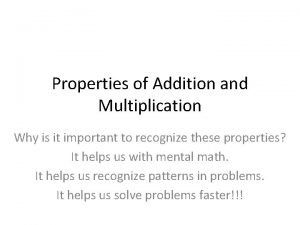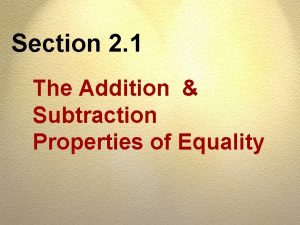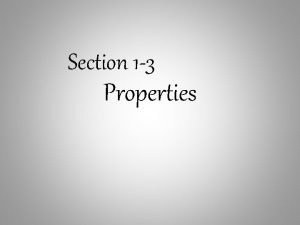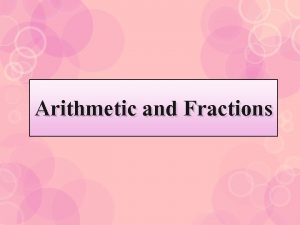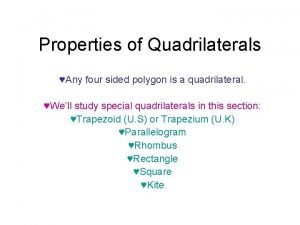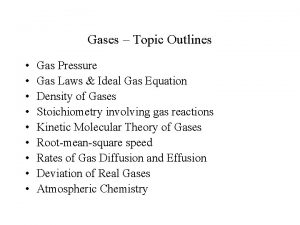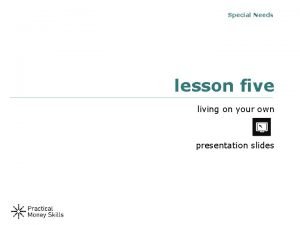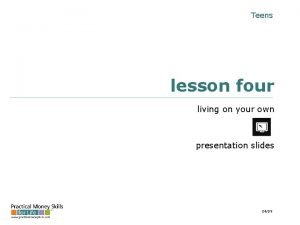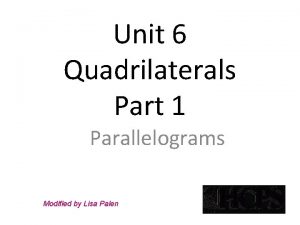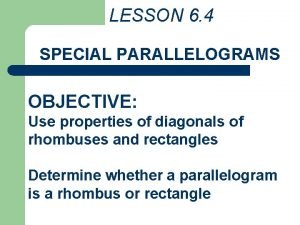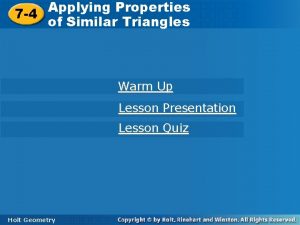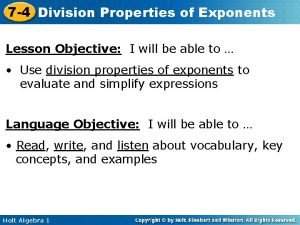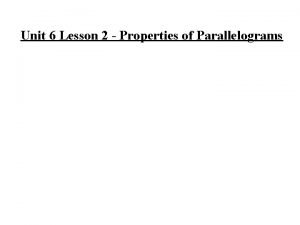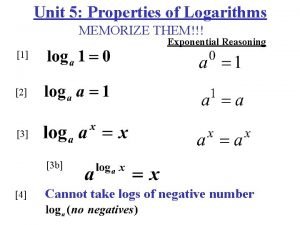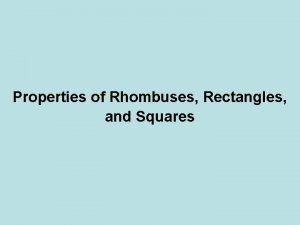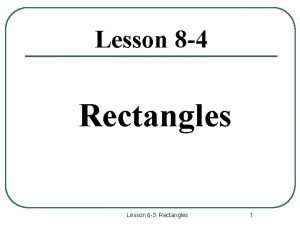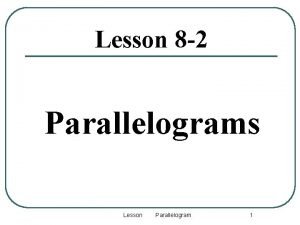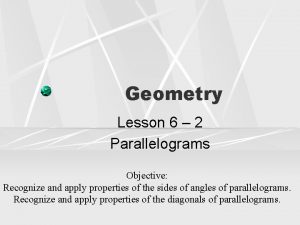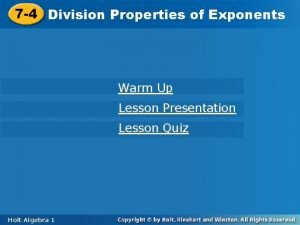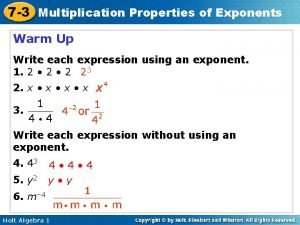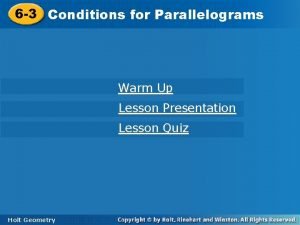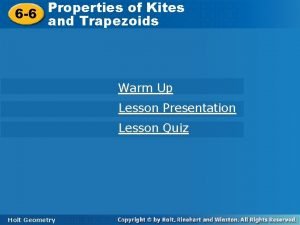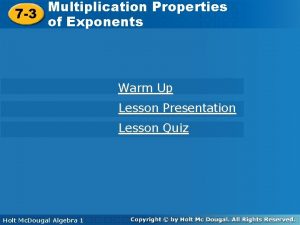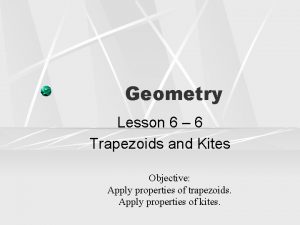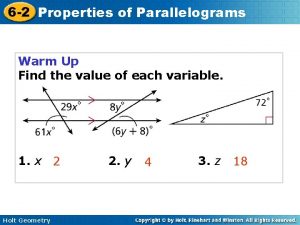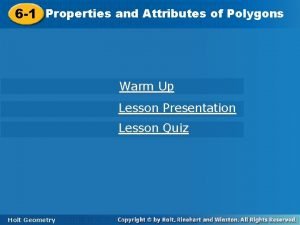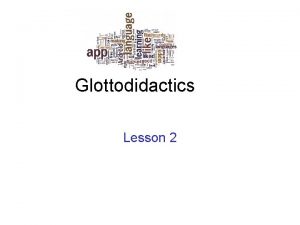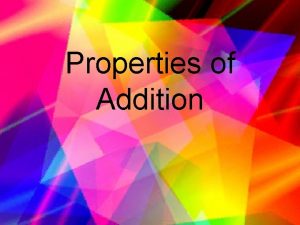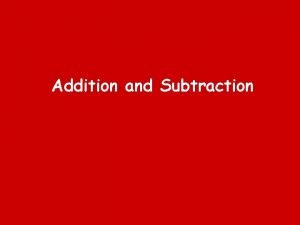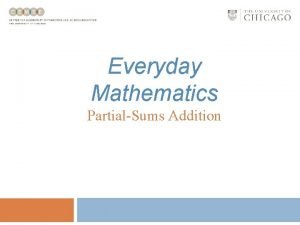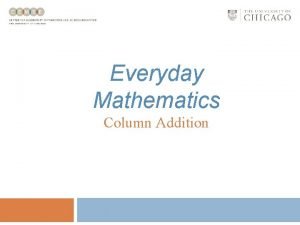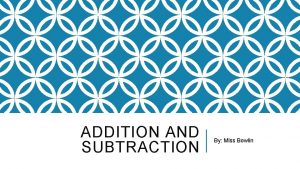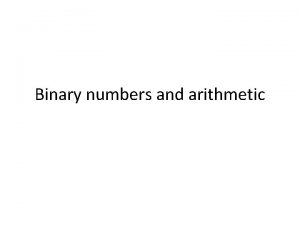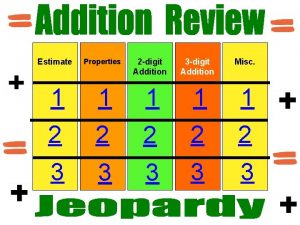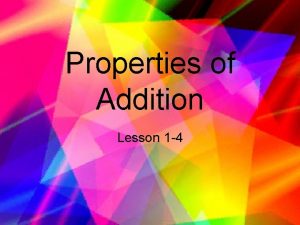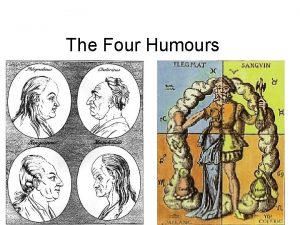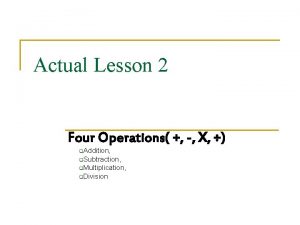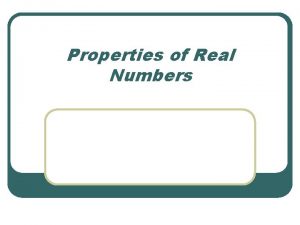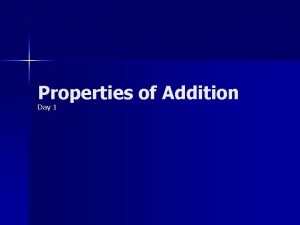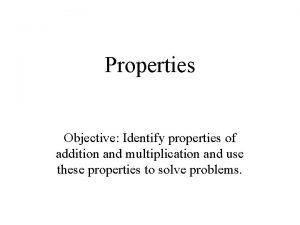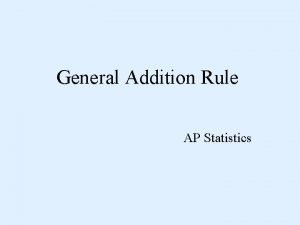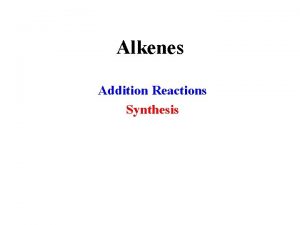Properties of Addition Lesson 1 4 Four Properties





























































- Slides: 61

Properties of Addition Lesson 1 -4

Four Properties of Addition 1. 2. 3. 4. Commutative Associative Identity Inverse

The Commutative Property • Background – The word commutative comes from the verb “to commute. ” – Definition on dictionary. com • Commuting means changing, replacing, or exchanging – People who travel back and forth to work are called commuters. • Traffic Reports given during rush hours are also called commuter reports.

Here are two families of commuters. Commuter B Commuter A & Commuter B changed lanes. Remember… commute means to change. Commuter B Commuter A

Here is another example…

Think of this hypothetical situation: Every day you ride your bike to school. The distance from home to school is 2 miles. The distance from school to home is also 2 miles. How do we know this? Did you notice that hypothetical and hypothesis look almost the same? Hmmmm. . . Think about what hypothesis means…

Home School The distance from Home to School is the same as the distance from school to home. Home + School = School + Home H+S=S+H A+B=B+A

The Commutative Property A+B=B+A

The Associative Property • Background – The word associative comes from the verb “to associate. ” – Definition on dictionary. com • Associate means connected, joined, or related – People who work together are called associates. • They are joined together by business, and they do talk to one another.

Let’s look at another hypothetical situation Three people work together. Associate B needs to call Associates A and C to share some news. Does it matter who he calls first?

Here are three associates. B calls A first He calls C last B A If he called C first, then called A, would it have made a difference? NO! C

(The Role of Parenthesis) • In math, we use parenthesis to show groups. • In the order of operations, the numbers and operations in parenthesis are done first. (PEMDAS) So….

The Associative Property The parenthesis identify which two associates talked first. (A + B) + C = A + (B + C) B A B THEN C A C

The Identity Property of Addition I am me! You cannot change My identity!

Zero is the only number you can add to something and see no change.

Identity Property of Addition +0= A+0=A

Inverse Property The sum of a number and its opposite is 0.

Examples 8 + (-8) = 0 -13 + (13) = 0 10+ (-10) = 0

Recall Commutative Property- The order in which you add two numbers does not change the sum. Associative Property – The way you group three numbers does not change the sum. Identity Property- The sum of a number and 0 is the number. Inverse Property- The sum of a number and its opposite is 0.

Let’s practice ! Look at the problem. Identify which property it represents.

(9 + 8) + 7 = 9 + (8 + 7) The Associative Property of Addition It is the only addition property that has parentheses.

12 + 0 = 12 The Identity Property of Addition It is the only addition property that has two addends and one of them is a zero.

9+7=7+9 The Commutative Property of Addition It is the only addition property that has numbers that change places.

4+6=6+4 The Commutative Property of Addition Numbers change places.

3+0=3 The Identity Property of Addition See the zero?

(4 + 3) + 2 = 4 + (3 + 2) The Associative Property of Addition It has parentheses!

a+0=a The Identity Property of Addition Zero!

Investigating Algebra Activity. Answer page 73 (Items 1 -14) Math UBD Book

Addition of Integers Rules in Addition • To add two numbers with the same sign, add their absolute values. The sum has the same sign as the numbers added. Examples: 8 + 7 = 15 -3 + (-5) = -8 -14 + (-20) = -34

Rules in Addition • To add two numbers with different signs, subtract the lesser absolute value from the greater absolute value. The sum has the same sign as the number with the greater absolute value. Examples: -12 + 7 = -5 18 + (-4) = 14

Remember! Absolute Value – The distance of a number from 0 on a number line. I 8 I=8 I -12 I = 12

Drill -11 + (-9)

Answer -20

Drill -24 + 8

Answer -16

Drill 9. 1 + (-2. 5)

Answer 6. 6

Drill 53 + (-37)

Answer 16

Drill -11. 4 + (-3. 8)

Answer -15. 2

Subtraction of Integers Rule in Subtraction In subtracting an integer from another integer, add the opposite of the subtrahend to the minuend. 14 – 8 = 14 + (-8) = 6 -2 – 7 = -2 + (-7) = -9

Drill 14 – (-5)

Answer 19

Drill 18 - 35

Answer -17

Drill -18 - 9

Answer -27

Drill -12 – (-9)

Answer -3

Drill -18. 2 – (-15. 4)

Answer -2. 8

Drill -98 – (-9)

Answer -89

Drill 32 – (-6)

Answer 38

Drill -89 – (-9)

Answer -80

Seatwork # 6 Perform the following operations 1) - 4 + (-9) 2) -19 + 23 3) 45 + (-10) 4)-12 + 3 5) -17 + 8


Homework Answer page 77 (Items 1 -15) Math UBD Book
 Physical properties lesson 2
Physical properties lesson 2 Lesson outline lesson 2 wave properties answer key
Lesson outline lesson 2 wave properties answer key Unit vector example
Unit vector example Property of real numbers
Property of real numbers Inverse property of addition
Inverse property of addition Addition and subtraction properties
Addition and subtraction properties Properties of addition and subtraction
Properties of addition and subtraction Properties of addition
Properties of addition Proper fraction example
Proper fraction example It is a shape it is has four side it is
It is a shape it is has four side it is Four eyes skin assessment tool
Four eyes skin assessment tool 4 basic properties of waves
4 basic properties of waves Four properties of gases
Four properties of gases Four properties of enzymes
Four properties of enzymes 4 sided shape
4 sided shape Four properties of gases
Four properties of gases Lesson four living on your own
Lesson four living on your own Lesson four living on your own
Lesson four living on your own Extensive and intensive examples
Extensive and intensive examples Chemical and physical properties
Chemical and physical properties Geometry unit 6 quadrilaterals
Geometry unit 6 quadrilaterals Properties of special parallelograms
Properties of special parallelograms Applying properties of similar triangles
Applying properties of similar triangles 7 properties of exponents
7 properties of exponents Find the value of each variable in the parallelogram
Find the value of each variable in the parallelogram Properties of logarithmic functions
Properties of logarithmic functions Properties of rectangles rhombuses and squares
Properties of rectangles rhombuses and squares Rectangle property
Rectangle property 6-1 lesson quiz geometry
6-1 lesson quiz geometry 6-2 parallelograms
6-2 parallelograms Chemical properties and changes lesson 4
Chemical properties and changes lesson 4 7-4 division properties of exponents
7-4 division properties of exponents 7-3 practice more multiplication properties of exponents
7-3 practice more multiplication properties of exponents 7-1 practice multiplication properties of exponents
7-1 practice multiplication properties of exponents Lesson 6-3 conditions for parallelograms answer key
Lesson 6-3 conditions for parallelograms answer key Notes 6-6: properties of kites and trapezoids
Notes 6-6: properties of kites and trapezoids 7-3 more multiplication properties of exponents
7-3 more multiplication properties of exponents Side side side similarity
Side side side similarity Lesson 6: trapezoids and kites
Lesson 6: trapezoids and kites Lesson 2 properties of parallelograms
Lesson 2 properties of parallelograms 6-1 properties and attributes of polygons
6-1 properties and attributes of polygons Lesson outline lesson 3 describing circuits answers
Lesson outline lesson 3 describing circuits answers Mountain building
Mountain building Lesson outline lesson 2 aquatic ecosystems answer key
Lesson outline lesson 2 aquatic ecosystems answer key Micro lesson ideas
Micro lesson ideas Ihi l 101
Ihi l 101 Mind map of gift of chappals
Mind map of gift of chappals Chapter 1 lesson 1 your total health lesson 1 quiz answers
Chapter 1 lesson 1 your total health lesson 1 quiz answers Lesson outline lesson 3 answer key
Lesson outline lesson 3 answer key Sat vocabulary lesson and practice lesson 4
Sat vocabulary lesson and practice lesson 4 Lesson outline lesson 1 solids liquids and gases answer key
Lesson outline lesson 1 solids liquids and gases answer key Lesson outline lesson 1 climates of earth answers key
Lesson outline lesson 1 climates of earth answers key Lesson outline lesson 1
Lesson outline lesson 1 Lesson 2 measurement and scientific tools
Lesson 2 measurement and scientific tools Characteristic of fingerprint
Characteristic of fingerprint Biome
Biome Lesson 4 gravity and motion lesson review
Lesson 4 gravity and motion lesson review Lesson outline lesson 2 the muscular system answer key
Lesson outline lesson 2 the muscular system answer key Today's lesson or today lesson
Today's lesson or today lesson 1 important lesson that is worth sharing about this lesson
1 important lesson that is worth sharing about this lesson Today's lesson or today lesson
Today's lesson or today lesson Scrap heap magnet circuit diagram
Scrap heap magnet circuit diagram




